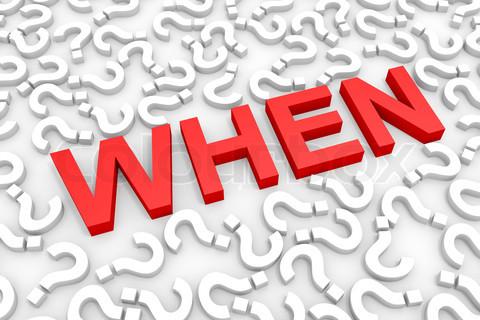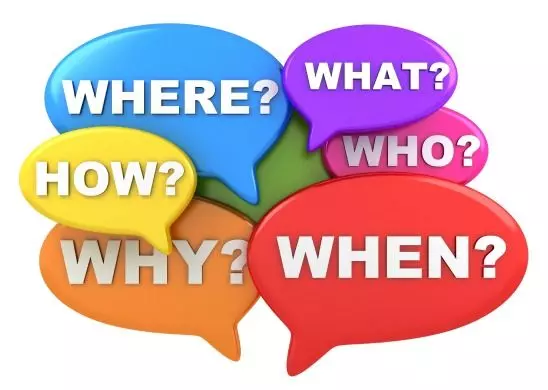When you join a software development project, in the process of researching and following customer requirements, you will certainly have many questions that need to be answered because:
- requirement shortage
- Described specs are not really clear, not detailed, not accurate
- You need to verify your understanding is true or false?
- Team members have different ideas.
Therefore, we need to create a Q&A file to serve as a reference for everyone in the team to look in the same direction. Moreover, File Q&A is also evidence in the project, helping us to compare with customers. Q&A file really plays a very important role, right?
So today I will guide you how to set Q&A effectively! 

I, Overview of Q&A:
1. What is Q&A?
 First we will learn what Q&A is!
First we will learn what Q&A is!
- Q&A stands for ‘Question and Answer’.
- Q&A is a situation in which one person or a group of people ask questions and another person or group of people answers those questions. In the software field, Q&A means a collection of questions and answers about the requirements that are unclear or missing in the specification document.
2. Who is eligible for Q&A?
- Everyone in the project participated in asking questions: BRSE, Comtor, Developer, QA, Supporter …
II, How to place Q&A:

There are 2 types of questions:
- Question closed
- Open question
1. Closed questions (Yes / No questions)
The closed question is mainly of the true and false confirmation from customers about a problem in the project that we are not really sure about.
- Structure: I give you opinions, opinions, issues that need confirmation so that customers can answer briefly.
- For example: How to calculate the user’s age?
+ Based on current date of birth and date of birth?
good
+ Based only on the year of birth and the current year?
2. Open questions
Open-ended questions are unanswered questions that require respondents to make their views on the issue in question.
For example:
- Which environment should the App / web be checked on?
- How to format CSV file to import user information?
3. When to use open-ended questions, when to use closed-ended questions?
Open questions are used when:
- The asker doesn’t have any information yet, knows anything about the problem he wants to confirm and wants the respondent to give suggestions information.
- Respondents want more detailed and in-depth information.
Closed questions are used when:
- Need to redefine the understanding of the questioner is correct or not?
- The questioner is not sure which method is used.
- In case the questioner does not know the answer but wants to suggest customers choose one of the options they have done or will do better.
4. How to ask questions
a. About the question layout:
- Specify the purpose of the question
- Ask how to hit and at the right time
- Need to limit deep technical terms
- During meetings, when asked, do not interrupt the speaker
b. Regarding the content of the question:
- With closed questions, the content should be clear and accurate
- With open questions, attention should be paid to the continuity and coherence of the questions
- In a short time, you must determine which questions are central and which are sub-questions.
- While asking, you can give your own opinion and listen to the opinions of the respondents.
III, When to use Q&A:
 There will be countless questions that:
There will be countless questions that:
- When to order Q&A?
- When to order internal Q&A?
- When to place Q&A with customers?
- When starting a project, how should Q&A be placed?
- When the project is running, how should Q&A be placed?
We will go in part!
1. When to place Q&A?
- Starting a project: This is the specification document analysis phase, need to ask many questions to customers to clear the spec.
- When the project is running: during project development
+ Change requests
+ New functions
+ During the test detected an issue and not clear / confuse - At the end of the phrase / project ending: is there a counterpart CR (Change request) or not?
+ Yes: Q&A is required to clear CR content, determine risk level, scope of influence and aggregate to send customers as soon as possible.
2. When to place internal Q&A?
- When the requirement is not clear and can be answered internally, use internal Q&A.
4. When to place Q&A with customers?
- When the requirement is not clear and cannot be answered internally, it is necessary to confirm with the customer.
+ Avoid internal sentences that can answer but put Q&A with customers
5. When starting a project, how should Q&A be placed?
- General Q&A for the whole project:
+ What is the priority order of the functions?
+ What is the test environment (app, web, web-app), how much support is it?
+ Test on which devices (Android / Ios), Which Browser (Chrome, Firefox, IE, Safari, ..)? - Specific Q&A for a specific function:
+ When is there a detailed spec for function X?
+ Is there a specific Mockup / WF / Design for this X function?
+ Q&A 5W1H

| WHAT? | WHO? | WHERE? |
|---|---|---|
| – What does this function include? – What is input information? – What is the output information? | – Who uses this feature? – Who has access to this function? | – Which screen will functions be implemented? |
| WHY? | WHEN? | HOW? |
| – Why is this function needed? What is the business meaning of function? – Why is function X affecting screen A? | – When to use this function? | – How does Function X work? |
6. When the project is running, what kind of Q&A should I set?
- Using open Q&A (5W1H): when the spec of function X is available, but not really clear.
- Using open Q&A (5W1H): when the spec of function X is available, QA has not grasped, customers are wondering the options and need to learn technical skills.
- Use Q&A to close (Y / N question): when the spec of function X is available, QA understands, but customers are wondering the options and ways to handle: Need to give suggestions to customers.
- Use Q&A to close (Y / N question): when the spec of function X is available, QA knows but is not sure, needs to confirm again.
More specifically how we see the Example below dentist.
IV, Q&A Template and Template
Download template file: https://link.sun-asterisk.vn/SAExNi
VD1 . If the spec of that function already exists but not really clear then we should ask open-ended questions.
(As a result of personal opinion, proving that I have read and understood your system like this, but there are some unclear issues, I would like to ask again to clear and everyone can grasp it together. )
1 2 3 4 5 | Question: [Màn Preview CSV]: Số lượng records muốn xem trước là bao nhiêu? Có xem được hết tất cả bản ghi trong file csv đã upload không? Answer: Hiển thị: title + 10 records |
VD2 . If the spec of that function is specific, you already understand but not sure, you should ask closed-ended questions.
(Because it should give your opinion to confirm the customer is Yes or No?)
1 2 3 4 | Q: [Forgot PassWord]: Khi gửi cùng 1 email nhiều lần thì chỉ link mới nhất mới Active có đúng không? A: Đúng |
VD3 . If the spec of that function you understand already, but found out that the screen is linked to another screen but has no spec then I should ask the closed-form question.
(Because it is advisable to give your specific judgment so that the customer can confirm which option is correct)
1 2 3 4 | Q: Ở màn 01 - 01 (Employee list) có 100 nhân viên ( 50 nhân viên/page). Vậy khi Click button Download Employee ở màn 02 -02 (Export Employee), sẽ download cả 100 nhân viên hay là 50 nhân viên thôi? A: Download 100 nhân viên. Download toàn bộ nhân viên hệ thống có. |
VD4. When you want to suggest to KH the features that are really necessary for users or suggestions on how to do, ask the closed form.
(Because it should give your specific options to customers which option is best for users, avoid rambling)
1 2 3 4 5 6 7 8 | Q: Tôi muốn hỏi về trường hợp xử lý rollback khi upload file csv: 1. Khi gặp 1 dòng lỗi, đưa ra thông báo lỗi cho dòng lỗi đó và thực hiện rollback luôn. 2. Đưa ra toàn bộ thông báo lỗi và thực hiện rollback file 3. Dòng nào gặp lỗi sẽ đưa ra thông báo, dòng nào không lỗi vẫn thực hiện import vào DB, không thực hiện rollback Với 3 phương án trên bạn sẽ chọn cách nào? A: Các bạn hãy làm theo cách 1 |
The above are ways of asking questions (Q&A) when we are involved in software development projects. I hope this article will help you in your work. Good luck. !!!
